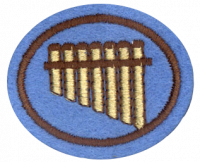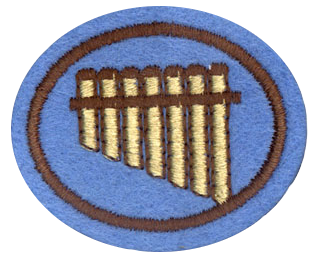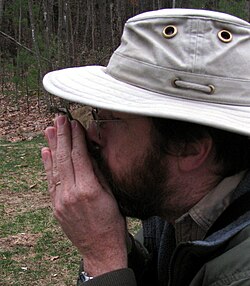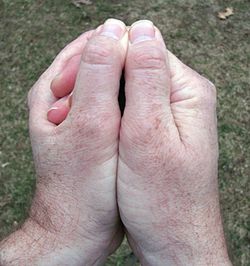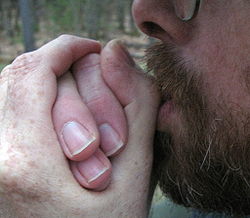Especialidades JA/Silbatos/Respuestas
1
2
3
4
5
5a
5b
5c
6
7
8
9
In making a willow whistle, all that is needed is a sharp knife. A saw is handy too for cutting the branch from the tree, but this can be done with a knife too (just not as effectively).
10
For a slip-bark whistle, straight grain is important because it is easier to remove the bark intact from a piece of wood with straight grain. Grain becomes non-straight anywhere a branch grows a sub-branch. The bark will snag on these irregularities, making it difficult, if not impossible to remove.
11
A whistle makes a tone as the chamber alternately fills with air and evacuates that air. This cycle repeats several hundred times per second, and the more times per second it repeats, the higher the pitch. There are three main factors that affect how often this cycle repeats: the length of the chamber, the size of the opening(s), and the speed of sound. The speed of sound is (for all intents and purposes) fixed. If the ratio of these other two factors get too "out of whack" with one another, the flute will no longer make a tone. If the chamber is too long, the flute will never resonate. Instead, the air will simply flow through from one end to the other without setting up the fill/exhaust cycles. If the chamber is too wide, it will not be able to confine the air to make it resonate, and the flute will whisper. &
12
A whistle is tuned by changing the volume of the resonant chamber. This is primarily done by altering the length of the chamber, but altering the diameter will also have an effect.
13
Select a long, wide blade of grass. Prepare to hold your hands together as if to pray, with the lower portion of the thumbs touching one another, palms together, and with the tips of the thumbs touching. Lay the grass blade between the lower thumbs as you press them together. The upper portion of the blade will lie parallel to the thumbs and be pinched together by the thumb tips. Before pinching the upper portion of the blade, bend the thumbs slightly. Then pinch the grass blade between the tips of the thumbs (or the index fingers), and extend the thumbs (or index finger), pulling the grass taut.
14
Hold the fingers of the right hand together and bring the tips into a tight circle. Place them in the web between your left thumb and index finger, enclosing the left hand about the right. The two thumbs should be parallel to one another and resting on the right index finger. This should form a cavity with a small gap opening into it between the upper and lower thumb knuckles. Bend the thumbs slightly and place your lower lip just below the top joint in the thumbs. Place the upper lip on the top joint and blow downwards into the cavity. If you're doing it right, it will make a whistling noise very similar to the call of mourning dove or a bob white. Try to keep the cavity air tight except where your breath enters between the thumbs. Once you are able to do this, try raising the pinky of your left hand while whistling. The pitch should rise. Quickly raising and lowering the pinky repeatedly will cause the whistle to quaver. Try not to drive anyone crazy with your new-found skill!
15
Adventist Youth Honors Answer Book/First aid/Bleeding/es
Para más información, véase la especialidad de Primeros Auxilios.
Adventist Youth Honors Answer Book/Camping/Knife safety/es
16
17
17a
17b
18
